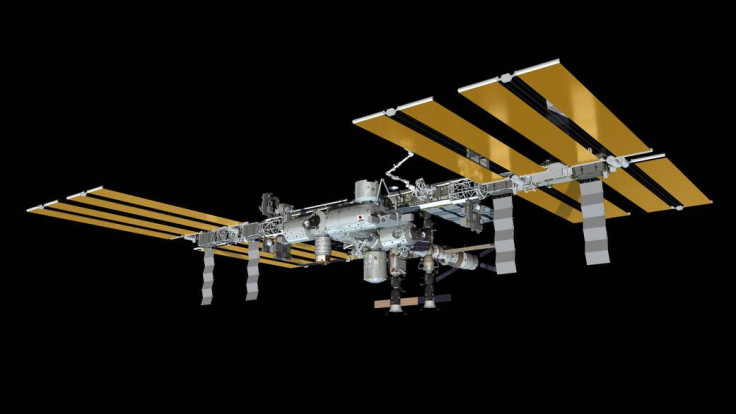International Space Station Could Be Armed With Laser System To Destroy Space Debris

The International Space Station (ISS) could one day be equipped with laser cannon to destroy hazardous space debris, according to researchers. The concept is expected to eventually lead to a high-efficiency laser system, which will be able to track space junk and remove it from the orbit.
The system combines a powerful telescope to detect objects and a newly developed laser system called CAN laser to shoot down space debris, which consists of artificial objects that accumulate as a result of human space activities. According to the researchers, the total mass of space debris is estimated to be about 3,000 tons. However, it is difficult to capture the debris because it exists in different orbits.
“Our proposal is radically different from the more conventional approach that is ground based, and we believe it is a more manageable approach that will be accurate, fast, and cheap,” Toshikazu Ebisuzaki, an astrophysicist and chief scientist at the RIKEN Computational Astrophysics Laboratory in Wako, Japan, said in a statement.
The telescope, which will be used to find debris, has been developed by RIKEN’s Extreme Universe Space Observatory (EUSO) team. The telescope was initially planned to identify ultraviolet light emitted from air showers produced by powerful cosmic rays entering the atmosphere at night.
“We realized that we could put it to another use,” Ebisuzaki said in the statement. “During twilight, thanks to EUSO’s wide field of view and powerful optics, we could adapt it to the new mission of detecting high-velocity debris in orbit near the ISS.”
The CAN laser was originally developed to power particle accelerators. The laser system features bundles of optical fibers that can produce powerful laser pulses. The scientists would use the laser to vaporize at least part of an orbiting space junk, creating a burst of high-speed plasma, which could push the object away from the space station, eventually leading to its re-entry into the Earth's atmosphere to burn up.
The scientists plan to install a proof-of-concept experiment on the ISS, with a small, 20-centimeter version of the EUSO telescope and a laser with 100 fibers.
“If that goes well, we plan to install a full-scale version on the ISS, incorporating a three-meter telescope and a laser with 10,000 fibers, giving it the ability to deorbit debris with a range of approximately 100 kilometers (62 miles),” Ebisuzaki said. “Looking further to the future, we could create a free-flyer mission and put it into a polar orbit at an altitude near 800 kilometers (about 500 miles), where the greatest concentration of debris is found.”
© Copyright IBTimes 2024. All rights reserved.






















